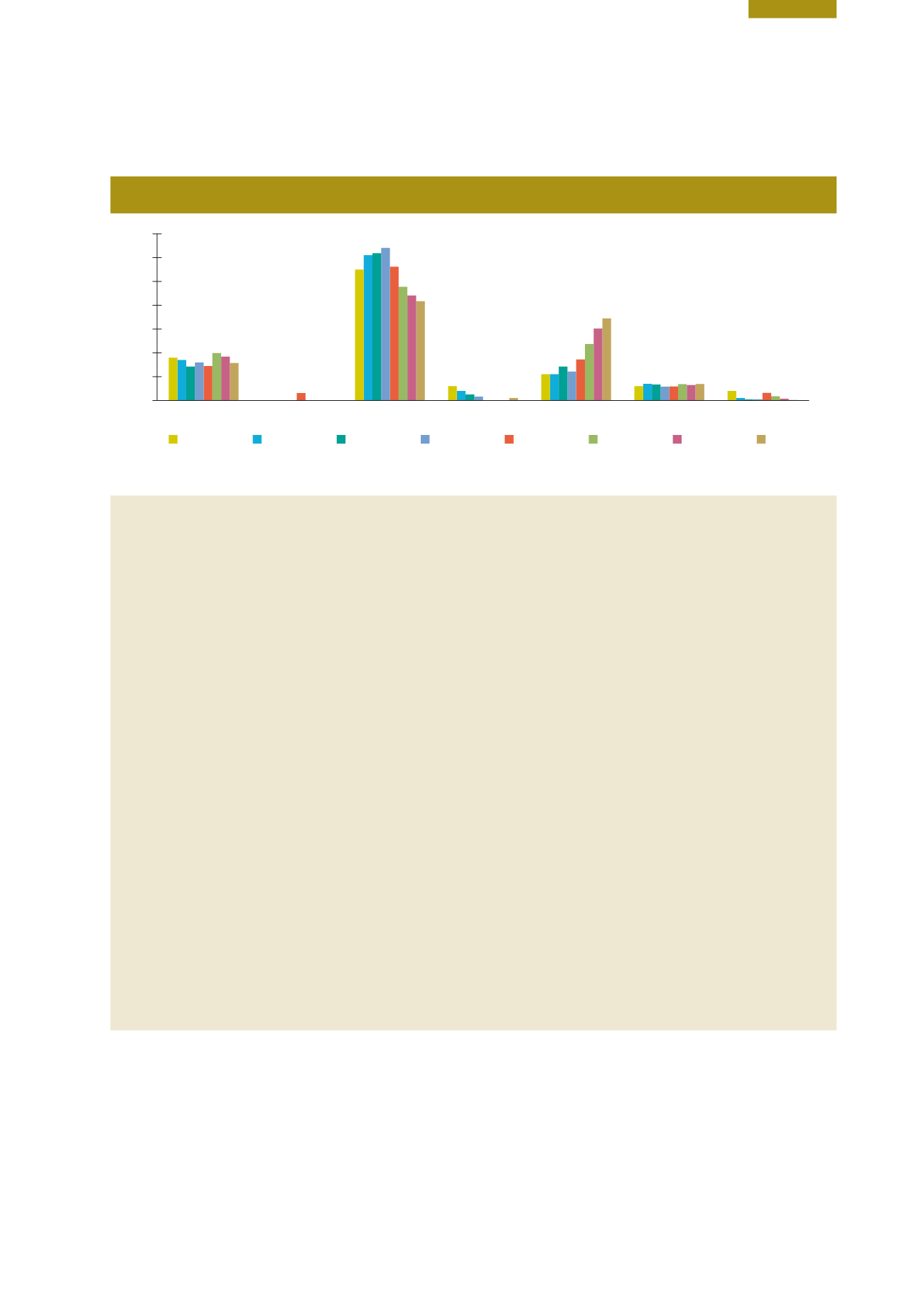

177
Chapter 11: Environment and Energy
Renewable Energy
Energy derived from sustainable sources such as wind, sunlight, oceans, geothermal, biomass and biofuels is referred
to as renewable energy. Ireland has considerable renewable energy resources, only a fraction of which are utilised
to address our energy requirements. See
www.seai.ie/Renewables/for information. The deployment of associated
technologies, including wind turbines, solar panels (photovoltaic and thermal), has increased significantly in recent years.
Wind, ocean, solar, hydro and geothermal energy do not produce GHG emissions or emissions of air pollutants
such as particulates, sulphur dioxide and nitrogen dioxide. Use of these renewable resources can have considerable
co-benefits for human health and ecosystems. Meeting energy requirements from renewable resources can provide
significant economic and employment benefits at local to national scales.
Bioenergy arises from combustion of various materials, including wood, animal wastes, and liquid biofuels such as
biodiesels and alcohols. Historically, wood was the largest renewable energy source in Ireland; however, it was largely
derived from unsustainable harvesting practices which led to Ireland’s forest being steadily reduced so that just 1.5%
of the total land area was under forest in the early 20th century (DAFM, 2008).
Sustainable bioenergy has the potential to replace some fossil fuels but a range of support measures will be required
to incentivise this switch.
Ireland’s Transition to a Low Carbon Energy Future 2015‑2030
(DCCAE, 2015) includes
measures to introduce a Renewable Heat Incentive from 2016 to reward each unit of renewable heat produced and
used. Unsustainable bioenergy production can result in significant emissions of GHGs, while the biomass combustion
process, particularly at a domestic level, and if not adequately regulated, can produce considerable emissions of
air pollutants.
Use of solar energy in Ireland has been limited thus far to direct water heating. However, the improvement in
efficiency of photovoltaic (PV) technologies and the remarkable decline in their costs mean that there has been
an increase in the use of these technologies to provide electrical energy, with systems being installed in public,
commercial and private buildings. If the trends in technological development and cost continue then PVs may
become a major source of energy for Ireland.
Figure 11.3
Fuel Types Used for Electrical Power Generation in Ireland, 2007-2014 (Source: CER, 2015)
0%
10%
20%
30%
40%
50%
60%
70%
2014
2013
2012
2011
2010
2009
2008
2007
Other
Peat
Renewables
Oil
Gas
EU fossil
Coal
The Residential Sector: the Second
Largest Energy User (After Transport)
There are big opportunities for improvements in
energy efficiency and cost savings for older homes.
The residential sector accounted for approximately 25% of
energy used in 2014 (Figure 11.1). The profile of residential
energy use is shown in Table 11.1. There has been a
considerable shift from coal and peat to oil and particularly
gas since 1990. Although electricity use has also grown, oil
still dominates residential heating.
Residential energy use in Ireland peaked in 2010. Since
1990 there has been a move away from coal and peat
to oil, gas and electricity. However, fossil based energy
sources still predominate.


















